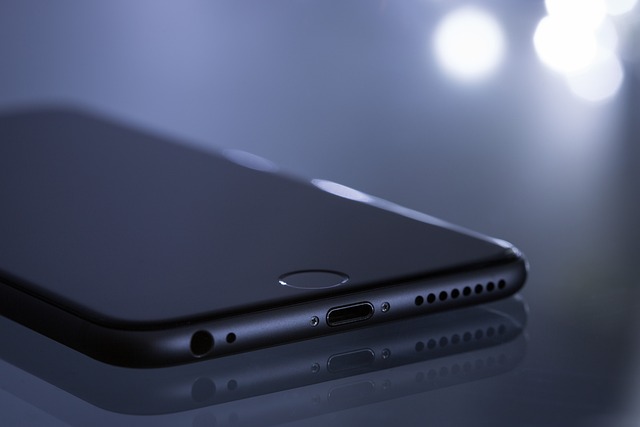Replaceing an iPhone battery can substantially restore your device's performance and extend its usable life. To determine if a battery replacement is necessary, regularly check the Battery Health feature on your iPhone for signs of degradation, such as reduced charge duration or frequent unexpected shutdowns. If you notice a significant drop in battery health or recurring power issues, it's likely time for a new battery. Whether opting for an Apple service or a reputable third-party provider, ensure the battery is genuine to maintain peak performance. If you're not skilled in electronics repair, consider professional battery replacement services to avoid complications and ensure a safe, warranty-backed installation. Always back up your data beforehand using iCloud or iTunes to prevent loss during the process. Post-replacement, maintain optimal battery health by charging between 20% and 80%, managing app usage, keeping your iPhone updated with the latest iOS, and avoiding extreme temperatures. These practices will help sustain the new battery's performance and ensure your iPhone remains efficient and reliable for a longer period. Regularly monitoring your iPhone's battery status is key to maximizing its lifespan and optimizing its efficiency after replacing the battery.
Replacing an iPhone battery is a routine maintenance step that can breathe new life into your device, enhancing its performance and longevity. Before embarking on this process, it’s crucial to understand the health of your current battery and its influence on overall functionality. This article guides you through the necessary precautions for a safe and effective iPhone battery replacement, whether you choose to perform it yourself or opt for professional services. We’ll cover essential steps, including a comprehensive pre-replacement checklist to ensure your data is secure and your device ready for the swap. Post-replacement care tips will also be provided to help you maximize your new battery’s lifespan and maintain optimal device efficiency. Learn how to confidently replace your iPhone battery and keep it running smoothly with our detailed guide.
- Understanding iPhone Battery Health and Its Impact on Device Performance
- Steps to Safely Replace Your iPhone Battery: DIY vs. Professional Services
- Pre-Replacement Checklist: Ensuring Data Backup and Device Readiness
- Post-Replacement Care: Maximizing Battery Lifespan and Device Efficiency
Understanding iPhone Battery Health and Its Impact on Device Performance

When considering the replacement of an iPhone battery, it’s crucial to understand the intricacies of battery health and its influence on device performance. iPhones come equipped with a feature that allows users to monitor their battery’s condition directly within the Settings app under Battery Health. This tool provides insights into both the maximum capacity and peak performance of the battery, ensuring that users can make informed decisions about when a replacement might be necessary. A degraded battery can lead to unexpected shutdowns, reduced talk time between charges, and a diminished ability to hold a charge, all of which can impede your device’s functionality. Regularly checking your iPhone’s battery health is a proactive step in maintaining optimal performance and extending the lifespan of your device. When the battery health measurement is noticeably lower than usual, or if you experience persistent issues with your phone staying powered on, it may be time to consider an official Apple replacement or opt for a reliable third-party battery service. Understanding your iPhone’s battery status and knowing when to replace iphone battery is key to preserving its efficiency and ensuring that it continues to serve your needs effectively.
Steps to Safely Replace Your iPhone Battery: DIY vs. Professional Services

When contemplating a replacement for your iPhone’s battery, it’s crucial to approach the process with caution and proper knowledge to avoid potential damage or safety risks. A depleted iPhone battery can affect device performance and longevity; hence, timely replacement is key. For those considering a do-it-yourself (DIY) approach, ensure you source an authentic Apple battery to guarantee compatibility and functionality. The DIY process involves disassembling your device, carefully removing the old battery, installing the new one, and reassembling your iPhone. This task requires precision and familiarity with small components; if you’re not confident in your technical skills, it may be wiser to opt for professional services.
Professional repair services offer a more reliable alternative, with experienced technicians who adhere to safety standards and have the necessary tools to perform the battery replacement efficiently. They can diagnose issues, verify that the new battery is correctly installed, and potentially provide a warranty for their work. This assurance of quality and expertise minimizes the risk of further complications. Whether you choose DIY or professional battery replacement, it’s imperative to back up your data before proceeding, as there’s always a slight chance of data loss during the process. By carefully weighing your options and preparing accordingly, you can ensure your iPhone operates at its best with a fresh battery in place.
Pre-Replacement Checklist: Ensuring Data Backup and Device Readiness

Before proceeding with an iPhone battery replacement, it’s imperative to prepare both your data and the device itself for a smooth transition. A critical step on the pre-replacement checklist is ensuring that all your important data is backed up. Utilize platforms like iCloud or iTunes to securely store contacts, photos, videos, messages, and other essential files. This safeguard is crucial to prevent any potential loss of information during the replacement process. Additionally, verify that your iPhone is recognized by iTunes or Finder and that it retains sufficient charge to power through the battery removal and reinstallation procedure. A low battery could potentially disrupt the replacement, necessitating a second attempt. To avoid any complications, ensure your device is at least 50% charged before handing it over for service. By adhering to these precautions, you can rest assured that your data remains intact and your iPhone is primed for a successful battery swap. This not only saves time but also ensures the longevity of your device post-replacement.
Post-Replacement Care: Maximizing Battery Lifespan and Device Efficiency

When your iPhone’s performance starts to wane, it may be time to consider a battery replacement. This action not only refreshes your device’s responsiveness but also extends its usable life. Post-replacement care is crucial for maximizing the newly installed battery’s lifespan and maintaining device efficiency. To ensure optimal battery health, avoid draining your iPhone completely; keeping it between 20% and 80% charge can prevent stress on the battery. Additionally, closing apps that are not in use, managing your device’s settings for energy conservation, and utilizing low power modes can significantly contribute to preserving your iPhone’s battery performance after a replacement. By following these practices, you can expect a smoother experience with your device and a longer lifespan from the new battery. Regularly updating your iOS to the latest version also helps, as it includes improvements that enhance battery efficiency. Furthermore, environmental factors such as extreme temperatures can impact battery health; thus, it’s advisable to use your iPhone in temperate conditions and avoid direct sunlight or excessive cold when possible. Taking these steps after replacing your iPhone battery will help ensure that your device remains efficient and reliable for a longer period.
When considering the replacement of your iPhone battery, it’s crucial to approach the process with both knowledge and caution. Understanding your device’s battery health and its influence on overall performance is key to making an informed decision about whether or not a replacement is necessary. This article has outlined the essential steps for safely replacing your iPhone battery, whether you opt for DIY methods or professional services. It also provided a comprehensive pre-replacement checklist to ensure your data remains secure and your device is ready for the procedure. Post-replacement care is equally vital to extend your new battery’s lifespan and optimize your device’s efficiency. By adhering to these guidelines, you can confidently replace your iPhone battery, ensuring a smoother and more reliable user experience. Remember to take advantage of Apple’s official resources or certified professionals for the best results.
